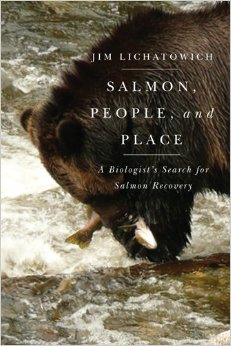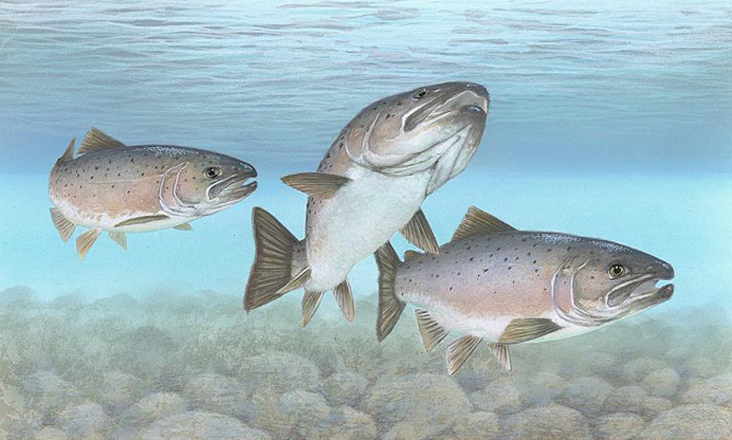 [dropcap]A[/dropcap]long with the subject new book there were two previous books highlighting the plight of salmon and steelhead in the northwest U. S. One by Jim Lichatowich titled Salmon Without Rivers: A History of the Pacific Salmon Crisis and the other, Making Salmon: An Environmental History of the Northwest Fisheries Crisis by Joseph E. Taylor III and William Cronon. Both books were released in 1999.
[dropcap]A[/dropcap]long with the subject new book there were two previous books highlighting the plight of salmon and steelhead in the northwest U. S. One by Jim Lichatowich titled Salmon Without Rivers: A History of the Pacific Salmon Crisis and the other, Making Salmon: An Environmental History of the Northwest Fisheries Crisis by Joseph E. Taylor III and William Cronon. Both books were released in 1999.
Background by William Dietrich of American Scientist
The Columbia River is the nation’s second biggest in water volume, its most heavily dammed, its greatest producer of hydroelectricity and the site of one of its greatest environmental tragedies.
The river once supported the greatest Chinook salmon and steelhead fish runs in the world: a silver tide of more than 10 million fish each year that swam hundreds of miles into the Columbia Basin to spawn. Some salmon, in subspecies now extinct, reached weights nearing 100 pounds.
Such bounty is no more. Today dams block half the Columbia Basin to fish migration, the rest has suffered severe environmental degradation, and the river’s commercial, sport and Indian fishery has largely collapsed. Engineers and biologists have spent more than $3 billion trying to retain and restore fish runs and have had little success. A number of fish populations are now listed under the Endangered Species Act. Proposals to breach dams, protect riverbanks and take back irrigation water have the region divided and in an uproar.
The Columbia is only the most famous example of a regional crisis. In the Pacific Northwest as a whole, 106 salmon stocks have become extinct. Fish are gone entirely from almost 40 percent of their historic rivers. Most of the others are at risk. Salmon numbers are severely depressed from San Francisco to the Canadian border.
Salmon, People, and Place: A Biologist’s Search for Salmon Recovery
By Jim Lichatowich:
Each year wild Pacific salmon leave their oceanic feeding grounds and swim hundreds of miles back to their home rivers. The salmon’s annual return is a place-defining event in the Pacific Northwest, with immense ecological, economic, and social significance. However, despite massive spending, efforts to significantly alter the endangered status of salmon have failed.
In Salmon, People, and Place, acclaimed fisheries biologist Jim Lichatowich eloquently exposes the misconceptions underlying salmon management and recovery programs that have fueled the catastrophic decline in Northwest salmon populations for more than a century. These programs will continue to fail, he suggests, so long as they regard salmon as products and ignore their essential relationship with their habitat.
But Lichatowich offers hope. In Salmon, People, and Place he presents a concrete plan for salmon recovery, one based on the myriad lessons learned from past mistakes. What is needed to successfully restore salmon, Lichatowich states, is an acute commitment to healing the relationships among salmon, people, and place.
A significant contribution to the literature on Pacific salmon, Salmon, People, and Place: A Biologist’s Search for Salmon Recovery is an essential read for anyone concerned about the fate of this Pacific Northwest icon.






